I think it’s fair to say I’m just a little bit influenced by movies and popular culture. And for my first regular blog post I didn’t want to fall into the trap that is Star Wars. Don’t worry there will be plenty of time for Star Wars, I hope.
Alternatively here’s another, but probably equally obvious influence. One Mr. Steven Spielberg. I think with his somewhat prolific and lengthy carer Spielberg has become an influence on so much of popular culture, in so many ways. And with my love of genre and blockbuster style cinema, it’s hard not to consider myself influenced by him as well.
With this being a photography blog, it does seem in this case that talking about his cinematography rather than say, Bruce his rubber shark would be more appropriate. Especially his use of light and what he himself calls “God light”. Spielberg is know, for good or ill depending on your opinion, for his dramatic, over-exposed lighting. But whatever you think it’s usually both bold and daring, being used to push the boundaries of what he can do with his frame and how it serves the story.
“One time he told me, ‘Allen, if you blow a scene because you went too far, I won’t be half as mad at you as I would be if you blew it because you played it too safe.’”
Allen Daviau – cinematographer of E.T.
Sometimes the drama you wish to invoke needs the dramatic to showcase it. Spielberg is known for his creative lighting, but he usually uses it to help tell his story (see the example of Indy below).
If we are going to talk about the influence of Spielberg, let’s use something else that is clearly influenced by the man as well. Come with me on a journey into the Upside Down, to demonstrate a few Spielbergian elements and styles in my photography. Using my Stranger Things set, which I will be honest I’ve criminally under-photographed in the time that I’ve owned it; I’d like to show some examples.
Firstly though what is it that Spielberg actually does with light. Here are a few key lessons.
Light as mystery
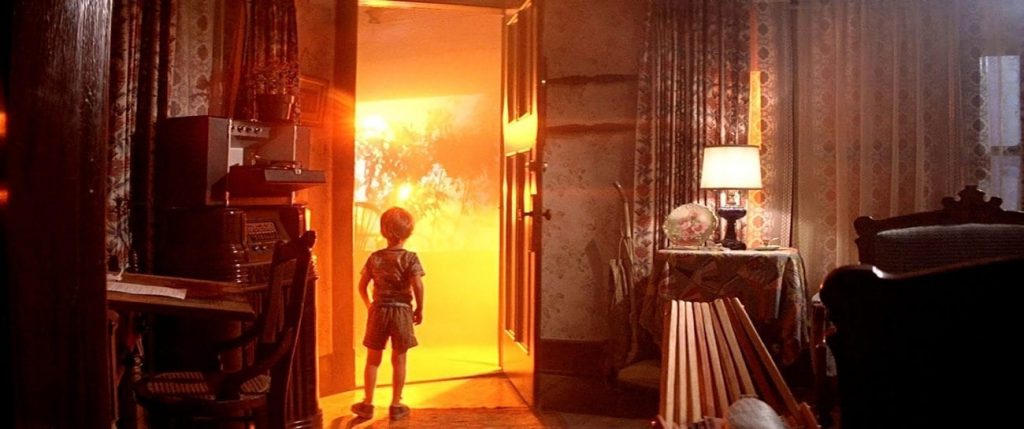
It’s a fair conception that people will consider there to be horror and mystery within darkness and shadows, as we as humans are usually creatures of the light. But if this is reversed and darkness becomes the norm, which is quite a regular thing in the cinema. (Hey, even the cinema screen itself is an example of this, a shining source of light in a dark room that draws us in.) And this is especially the case in sci-fi, where we regularly find Spielberg working, where the darkness associated with space is so prominent. Then the light becomes a focus point and in turn mysterious in and of itself.
Spielberg uses this a lot in his films, and because he’s focused on light and not darkness, it can also evoke hopefulness alongside the mystery. Because if it has the power to do both things, and if there is also a horror element involved, it can become even more uneasy due to the light being able to represent the good and the bad at the same time. The viewer can’t decide which way to read it creating a tension.
In the above shot, as the child opens the door to the incoming aliens, the framed light is different from anything else in the frame, suggesting the other worldly mystery outside. Spielberg’s ‘blocking’, his ability to frame within the frame is a whole other blog post in and of itself.
High contrast
Contrast creates drama, contrast gives a feeling of action and it can insinuate what you want reality to be. All of these reasons are why the T-Rex attack in Jurassic Park was shot in the dark. With high contrast lighting. It is why it still looks believable nearly 20 years later. We accept the story being told so we believe the dinosaurs are real. It’s something very strange, that as many movies put their climatic battles in the dark to hide bad effects becoming blurry mess and suffer for it. With Jurassic Park, Spielberg and his effects team used the ‘practical’ lighting of a lightning storm to increase tension and fear but also hide the bad effects. It’s a fine line but if it works for the story rather than just being lazy, or trying to be moody it can make all the difference.
Now after that little dino segue. If we apply that same idea to toys, are we not playing the same game. By which I mean are we all as toy photographers not trying to create a believable reality, rather than trying to be truly realistic. By which I mean we retrying to bring a narrative to life.
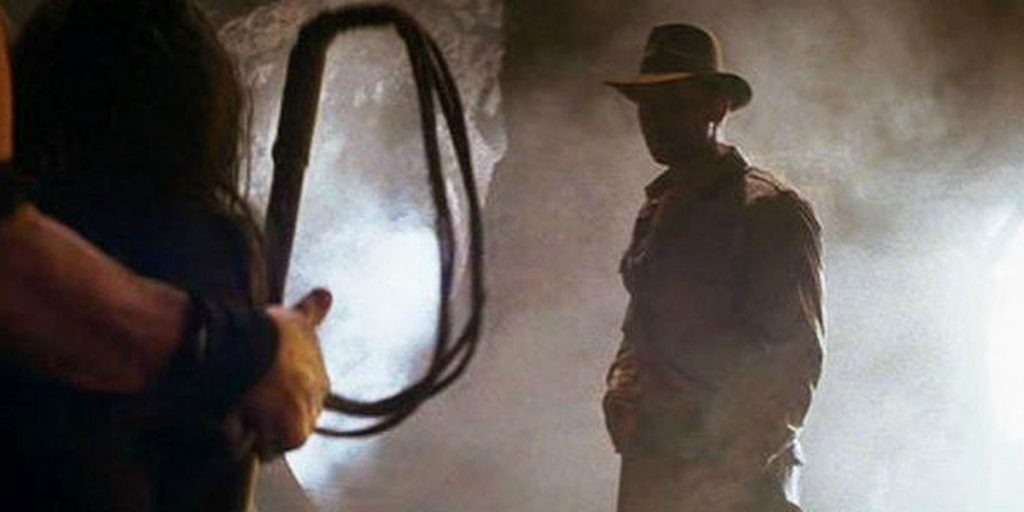
In the above shot of Indy we already know that he’s our hero, but the brighter background tells us of his higher intentions. Indy’s hat gives the perfect silhouette so we know without a doubt who we are seeing, meaning we don’t need to see the details of his face so the lighting can be used to dramatic rather than practical effect. Instead evoking his an angelic/heroic nature. The narrative reality is more important the the factual reality.
God Light
“I’ve always loved what I call “God Lights,” shafts coming out of the sky, or out of a spaceship, or coming through a doorway.”
Steven Spielberg

Now this is the most dramatic bit, and personally I have always called them God rays when I would see them coming out of the clouds when I was younger. What is happening in this shot, taken from A.I. is another backlit setup, but with all of the mist and particles that are in the air catching the light. It creates not only dramatic silhouettes and backlighting into the camera, but it gives a three dimensional depth to the characters and the scene as the light wraps around everything in the frame.
Along side the beams of light the characters and objects in the scene become edge lit. It gives both a 2D and 3D image at the same time. And it can all use practical lighting, that is present and grounded in the image, again creating a believability. You accept the light in the frame because you can see its source.
Janusz Kamiński (Spielberg’s long time cinematographer, since Schindler’s List) says the light has something to “show up in” when it comes to smoke and mist.
In this example and because of the smoke acting as a diffuser, the light is softer, almost heavenly. It’s something that Spielberg film do quite a lot, the exposure of the windows are often blown out, to evoke a bigger, brighter world outside.
For further reading on Spielberg and lighting: https://filmcameracourse.wordpress.com/2013/02/08/mimic-the-movie-masters-steven-spielberg-part-two/
Now lets check in to Hawkins, Indiana
Trick or Treat, Freak
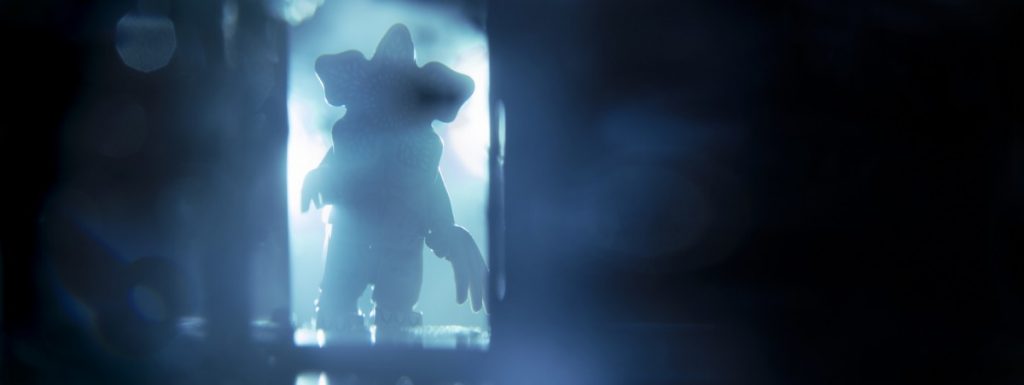
This photo was taken through the Upside Down version of the Byers’ House, with lots of dangling elements between the camera and the figure. Two backlights were placed directly behind the figure with coloured gels and one fill light is shining up from below the front of the camera. And then lots and lots of Atmosphere Aerosol.
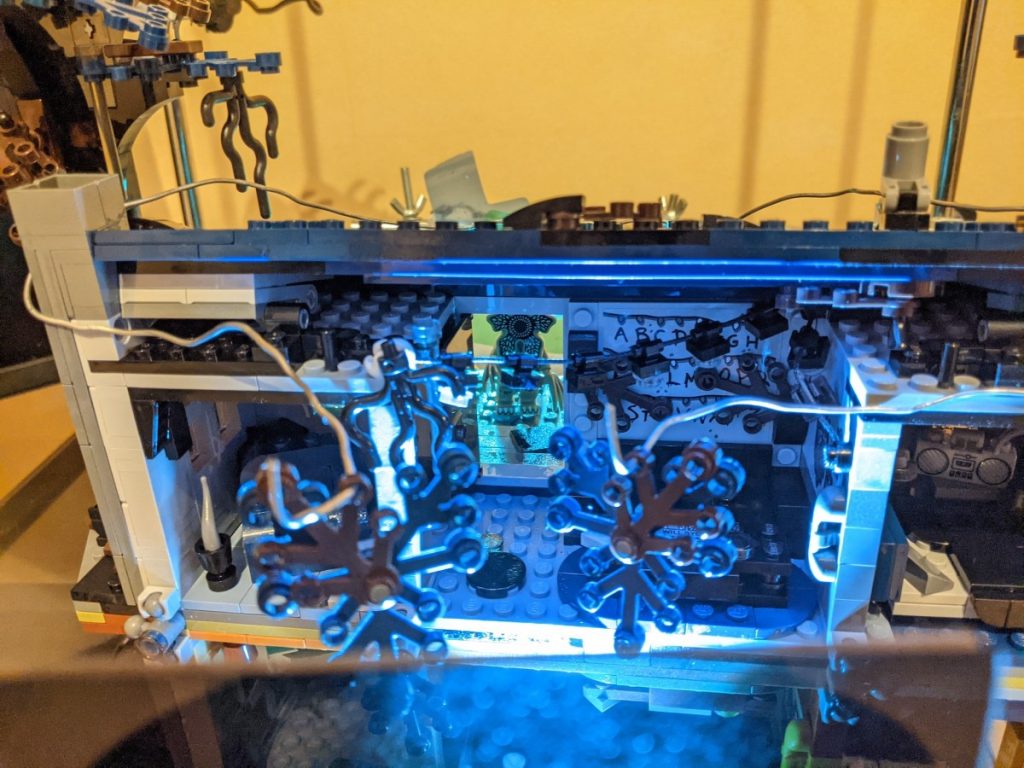
The Gate
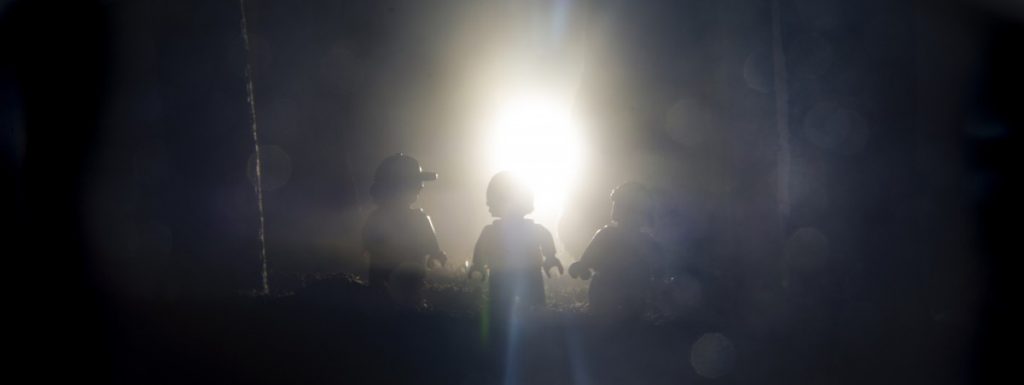
This photo was taken in my new (and very sophisticated, no expense was spared) woodland diorama. The lab stands I usually use to hold lights helped create some trees with the cut branches, while the floor is a mixture of coffee and herbs. A single backlight straight into the camera and again lots of Atmosphere Aerosol complete the scene.
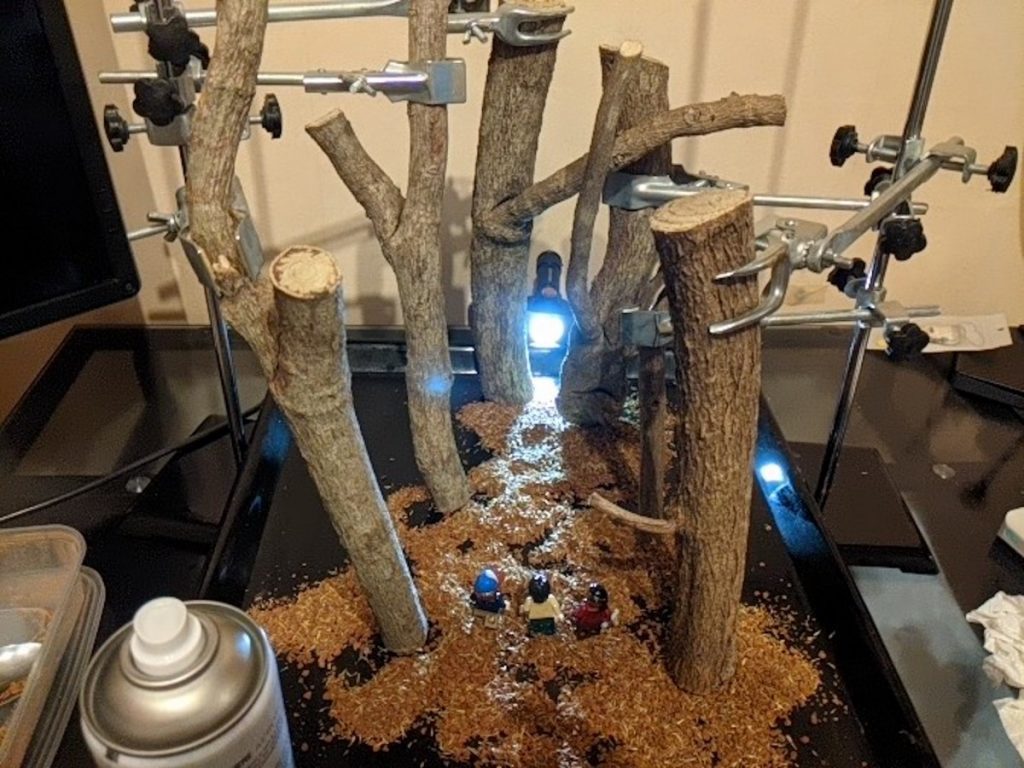
The Upside Down
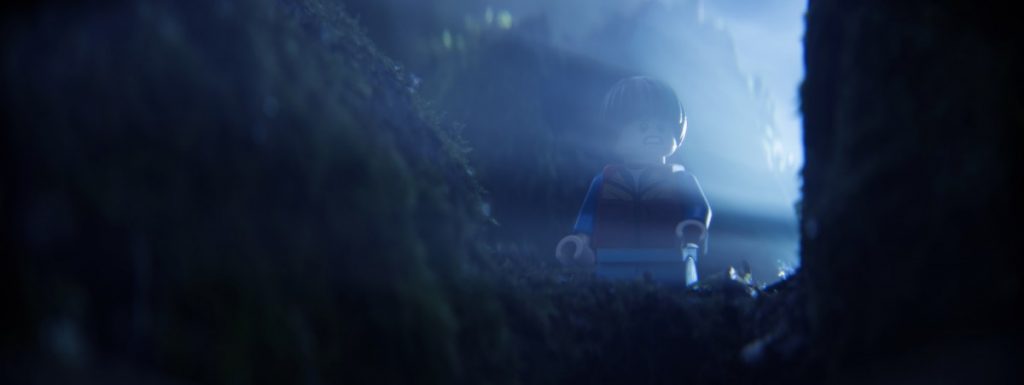
This photo was taken outdoors within the stump of a tree and between the rising branches. I simply put a torch behind and as always used a lot of Atmosphere Aerosol. Unfortunately I was too cold in the snow to get a BTS for this one though, it would seem I just don’t suffer enough for my craft.
I hope you’ve all enjoyed this little trip through the Upside Down, and along the way breaking down some Spielbergian lighting influences. It was great to finally get some photos of this set that I’ve left sitting idle for far too long. And it was great to pretend I was a blockbuster movie maker for a few evenings.
The Vanishing of Will Byers
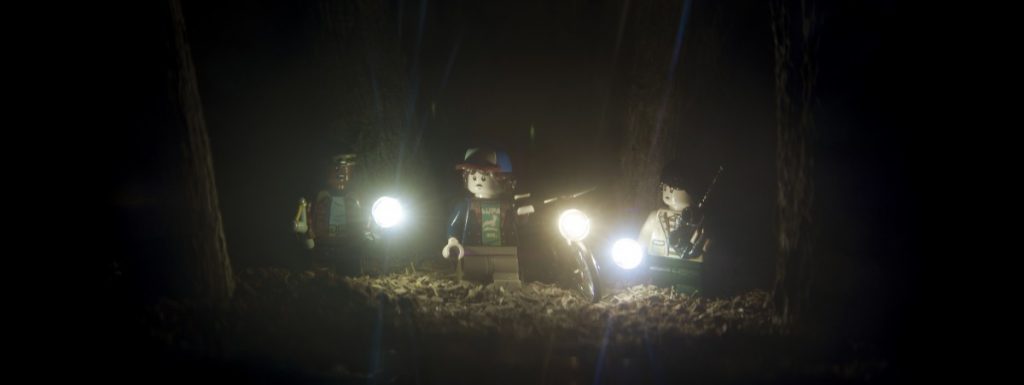


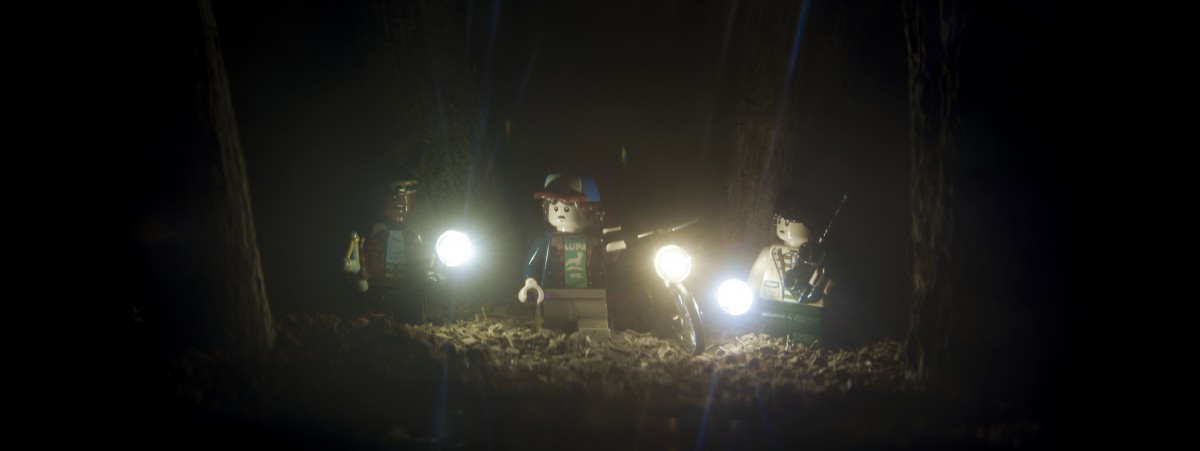
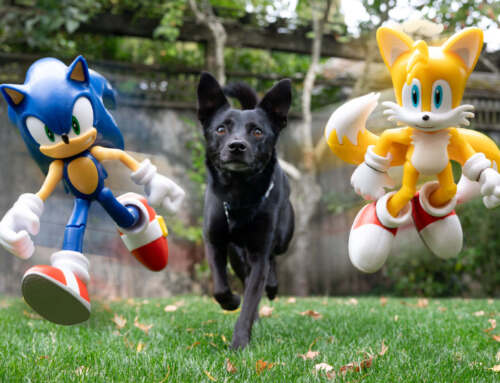
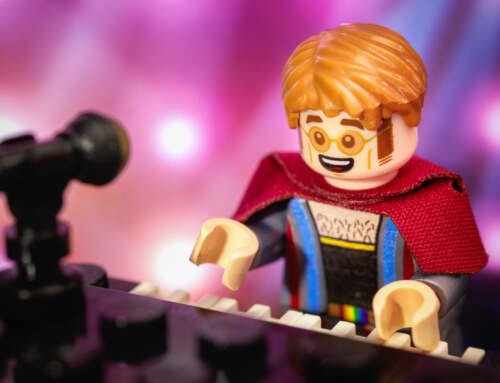
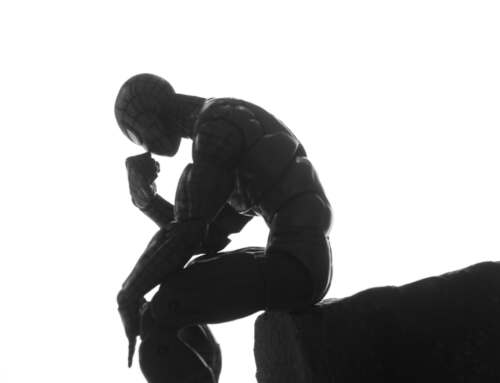
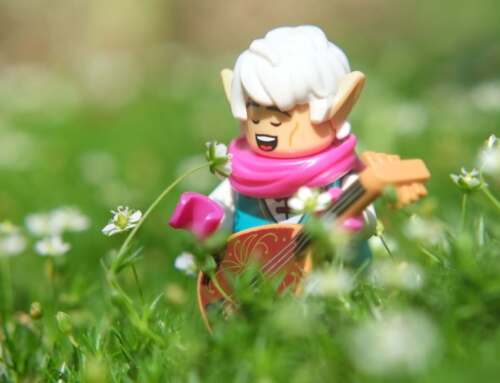
Wonderful post! And welcome to the blog! I became a fan of yours from your talk at the virtual toy safari, and I look forward to seeing future posts from you.
Thanks Dave. I’m glad to be part of the team. I’ve got a few more things in the works, so hoping to keep things interesting moving forward.
Great job, Tom. I look forward to read more of your posts in the future. Thank you for teaching me about God Lighting I never knew the term.
Thanks Sabrina. I wouldn’t have called them God light myself, probably beams or rays if I’m honest. But who am I to argue with Mr Spielberg? ?
Love the BTS shots and your atmospheric lighting!
Thanks Matt. I just tried to show from the beginning to the end of the process with a little bit of the influence and a little bit of the BTS. Something for everyone hopefully.
Wow I love this and I really enjoyed not only the bts but the whole post. Look forward to reading more..
Thank you NIcole, I’ll be back with something new every month. I’m glad you enjoyed the read
Welcome to the blog Tom!
And your start is awesome! I really enjoyed reading the post and watching your great pictures.
That way of lighting scenes is also close to me, so it’s very inspiring.
In Poland these single rays of light, coming through the holes in the clouds, are called “God’s fingers”. And since Kamiński is a Pole, maybe he influenced Spielberg with this name 😉
I’m looking forward to read more from You!
Thanks Tomek.
You are definitely being too kind with your words ?. God’d fingers, that’s interesting, maybe you are right and that could be its origin. And I am hard at work on next month’s content.
Great article along with you great images, I look forwards to reading more in the future
Thanks Phil, I’ll get to work on some new content for next month. Also look out for some B-sides on social media soon.